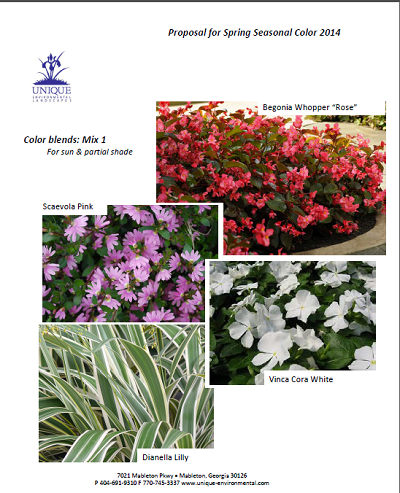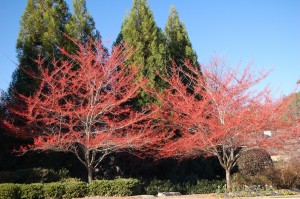It may still feel like winter in the metro Atlanta area, but to landscape designers, it feels like a blank canvas ready for us to paint! Fresh color combinations can turn any area, whether home or business, into a showplace, creating a welcoming atmosphere and setting the stage for your visitors, family, customers, residents or employees to enjoy the outdoors.
Over the next few weeks, we’ll be sharing some innovative and fresh spring color combinations that we can integrate into your home or business seasonal color beds. This week, feast your eyes on a color combination perfect for the Atlanta area because it’s suitable for sun and part shade, which is a common issue in our tree-heavy area. (Click on the image for a larger view of the custom PDF.)














